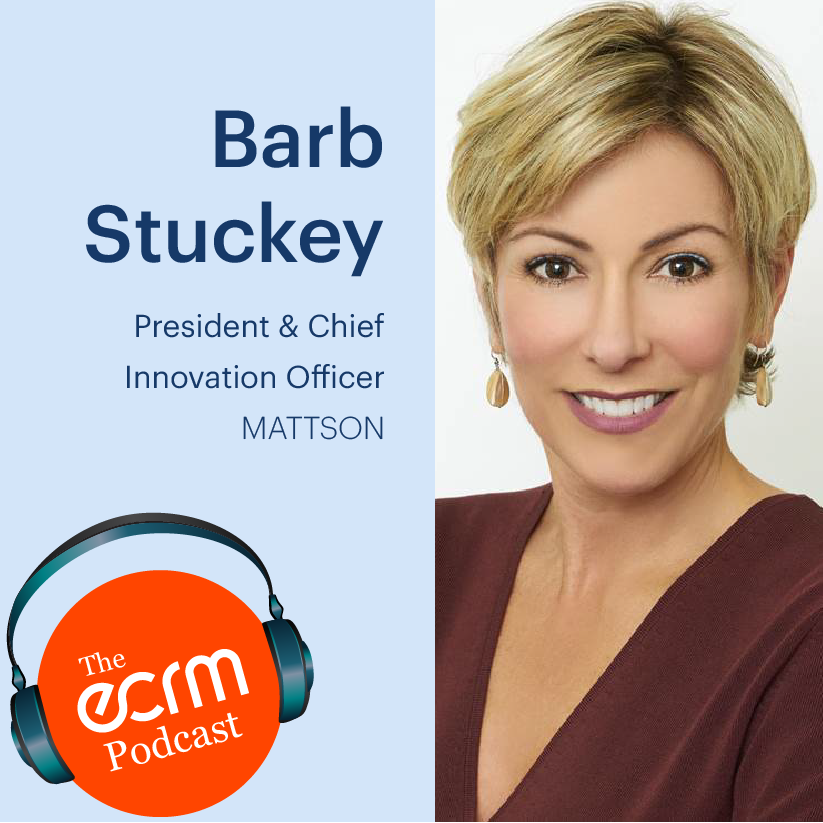Uncovering Food & Beverage Product Innovation Opportunities 10/2/2020
 Innovation is the key to success for emerging brands in the food and beverage segment. But what are the attributes that go into this innovation? For the answer to this, I recently spoke with Barb Stuckey, President & Chief Innovation Officer at Mattson, a Silicon Valley-based insights, strategy, and development firm that helps clients develop food and beverages for the retail and chain restaurant industries.
Innovation is the key to success for emerging brands in the food and beverage segment. But what are the attributes that go into this innovation? For the answer to this, I recently spoke with Barb Stuckey, President & Chief Innovation Officer at Mattson, a Silicon Valley-based insights, strategy, and development firm that helps clients develop food and beverages for the retail and chain restaurant industries.
Mattson helps its clients along the journey from idea to commercialization, identifying areas of opportunity, developing the strategy and conceptual development, finding the right contract manufacturer and helping them scale up their distribution so they are retail and foodservice-ready.
As part of Barb’s role in the innovation projects that make up her daily job, she is required to taste food and figure out how to make it better. After more than two decades doing this, she’s honed her tasting skills and ability to help others make food taste better. Indeed, she shared this insight with the world in 2012 with her book, Taste What You’re Missing. In addition, Barb was instrumental in helping The San Francisco Cooking School integrate the science of taste into their curriculum. She now teaches the Fundamentals of Taste to each entering class.
During our podcast interview, Barb and I discussed what it means to innovate and create a product that truly represents a point of difference from what's on the market. We review what factors are important in achieving this, and what segments of the food and beverage industry are ripe for innovation. Below are some key takeaways as well as areas of opportunity for innovation:
LISTEN TO THE PODCAST (VIEW VIDEO BELOW)
Identify true innovation opportunities
Find those areas of unarticulated wants and needs among consumers where you can create a product that has a point of difference from what’s already on the market.
Stand for something
Explore areas where your brand has legitimacy, such as a history or a mission that consumers can associate with it. This can be a particular type of distribution or a particular manufacturing capability, or perhaps the brand occupies such a unique space because of the way that they've gone to market, or appeal to a very specific consumer segment.
Develop a killer product
As Barb says, a killer product is your best defense; it’s your best way to succeed. You really need to spend the time and money to get the product right. For example, if you have identified a particular nutritional benefit that you can work into your product, but the consumer sees the product as a sacrifice, they're not going to repeat purchase.
Understand the competitive set
Know who you’ll be up against on the shelf, particularly if it’s a category that has a lot of companies that are already doing well, as these companies may have some capabilities, assets and some advantages that you don't have. Focus instead on areas where you can win.
Innovation opportunity: Wellness
Not surprisingly, in the age of COVID, we’ll continue to see growth in health and wellness segments, including products that offer a unique wellness benefit or that have ingredients enhance immunity. Wellness today means the ability to relax, the ability to sleep well, the ability to perform at your best, and products that tap into those types of consumer desires will be in demand. This is happening across every food and beverage product category, from functional beverages to even candy and snacks.
Innovation Opportunity: Plant-based food and beverages
There are tons of opportunity in this segment, as it’s relatively new and there are many areas in which there are no clear winners yet. To put it in perspective, plant based dairy alternatives represent somewhere between 14 and 15% of the entire fluid dairy category, yet there are many other categories don’t have anywhere near that level of plant-based alternatives. (One example is plant-based soups, which is one Mattson recently worked on.)
Innovation Opportunity: Enhancing the at-home eating experience
With most people eating at home, there are some shorter-term opportunities for consumer packaged goods brands to deliver experiences that consumers are lacking and craving because they haven't been able to go out and eat – an experience that involves the atmosphere, as well as specific sounds and smells. Finding a way to capture the essence of some of these experiences across categories, including snacking experiences, beverage experiences, and frozen food experiences, is a way a brand can really stand out in today's eat-at-home world.
ECRM’s upcoming Food & Beverage sessions will showcase tons of it among the participating emergng brands. We hope to see you there!
- ECRM Commercial Foodservice Program: November 02, 2020 - November 05, 2020
- ECRM Campus Foodservice Program: November 03, 2020 - November 05, 2020
- ECRM Foodservice at Retail Program: November 04, 2020 - November 05, 2020
- ECRM Plant-Based Food & Beverage Program: November 09, 2020 - November 12, 2020
- ECRM Seafood Program: November 10, 2020 - November 11, 2020
- ECRM Keto Food & Beverage Program: November 10, 2020 - November 12, 2020
- ECRM Meat Program: November 11, 2020 - November 12, 2020
.jpg)
